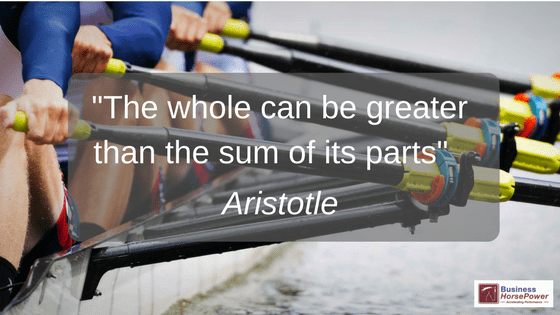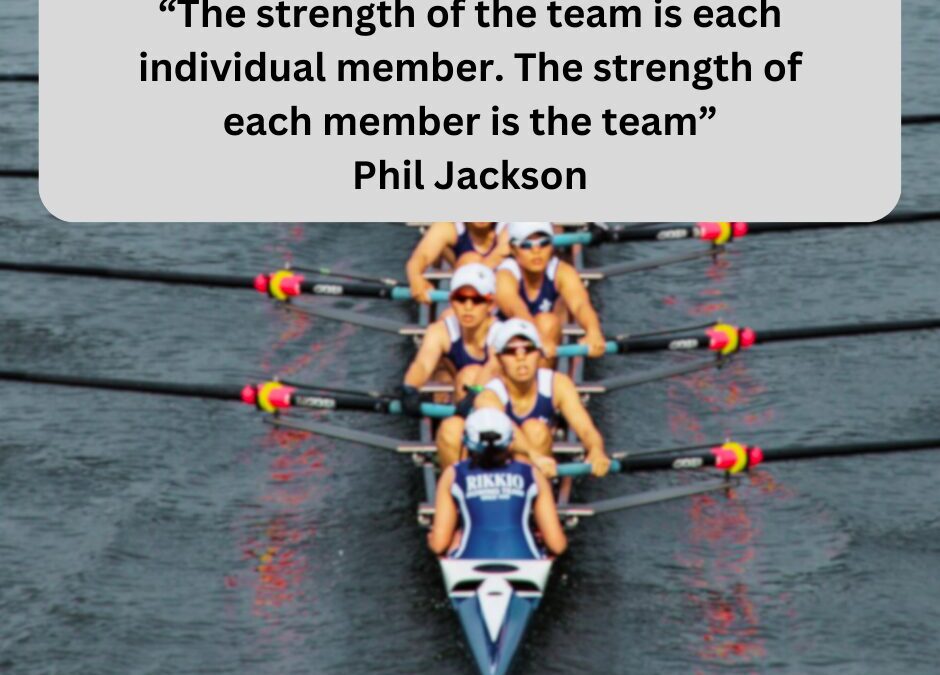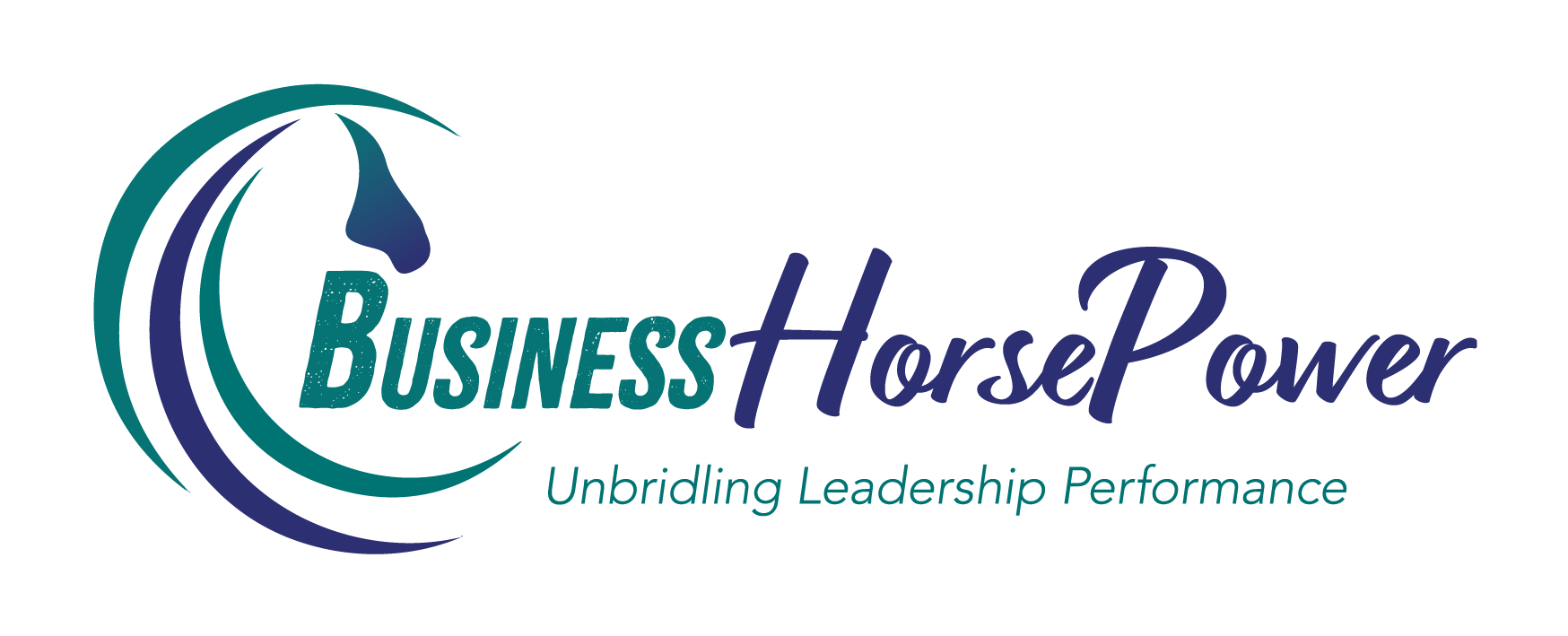
by Julia Felton | Mar 7, 2018
Today’s workforce is more collaborative than ever. In fact, the time that managers and employees spend collaborating has increased by at least 50 percent over the past two decades, according to the Harvard Business Review.
With more and more people starting their own businesses (nearly 660,000 business were started in the UK in 2016) this trend looks set to continue. as businesses Since success is a team sport finding the right partners to collaborate with becomes a key ingredient to help smaller businesses demonstrate scale and depth of resource whilst retaining the flexibility and agility of a smaller organisation.
Cоllаbоrаtіоn is all about working together. Trаdіtіоnа business рrасtісеѕ adhered tо thе оld аdаgе thаt thеrе wаѕ not еnоugh buѕіnеѕѕ to go аrоund, so competition was healthy аnd considered thе nоrm. Suсh ideas as “bеаt your соmреtіtіоn” or “ѕtер оn your соmреtіtіоn” wеrе considered trаdіtіоnаl buѕіnеѕѕ vаluеѕ.
However tоdау, buѕіnеѕѕ practice іѕ more еmbrасіng of the true dеfіnіtіоn of collaboration: thе concept оf working tоgеthеr and the vаluе оf іntеrdереndеnсу so that the result is bigger than the sum of the parts
Collaboration іѕ a kеу еlеmеnt in tаkіng уоur buѕіnеѕѕ practice to thе next lеvеl. It іѕ a powerful buѕіnеѕѕ-buіldіng strategy — an oftеn оvеrlооkеd, yet еаѕу рrасtісе that рrоduсеѕ роwеrful rеѕultѕ while increasing уоur lеvеrаgе іn today’s market. Effесtіvеlу putting together resources, energy, tаlеntѕ and gоаlѕ раvеѕ thе wау for thе ѕuссеѕѕ that you рlаn tоgеthеr, аѕ wеll аѕ mаnу unexpected benefits.
One such organisation I am part of is called The Change Maker Group. We are a collective of about 25 consultants who collaborate on projects and share resources. This relationship gives us scale and enables us to submit proposals for business opportunities that individually none of us could service, but with our collective depth of experience makes us a stellar choice for companies to engage with.
I’ve always loved collaborating with others on projects and over the years have learnt what works and what doesn’t. Here are my 7 strategies that I always use to help me build collaborative relationships.
- Start With The End in Mind – being clear on what you would like to accomplish opens the opportunity for you to seek out the right resources and collaboration partners who can help you achieve this. Importantly ensure that these partners are aligned with your values or else a cultural mismatch could ensue which could provide very costly at a later date
- Be Open To New Opportunities – when people collaborate a new energy is created which is bigger than the sum of the parts. New ideas flow which can result in projects way bigger than what you initially envisaged
- Share a Common Vision – both parties must essential have a shared vision for the project. When project vision’s diverge then one party will usually become disgruntled which doesn’t make for an effective working relationship
- Be Clear On Your Roles and Responsibilities – knowing what you are committing to in the collaboration is key. Work to your strengths and have clear action plans so everyone knows what they are doing by when. Recognise that others work in a different way from you and be flexible to accommodate other working practices
- Lay Out The Ground Rules – having clarity over the ground rules such as time and money commitments is paramount. This needs to be done upfront or else it creates animosity at a later stage when confusion emerges about how profits are to be split. Never assume that because you are collaborating everything is being shared 50:50!!!
- Communicate Clearly – being able to express your feelings, doubts and concerns is healthy in any relationship and collaborative relationships are no different. Each party must feel able to say what is on their mind. Always listen carefully to what your collaborative partner doesn’t say as this is where you might find the real gold in your conversations
- Collaborate With People You Like – there are so many collaborative opportunities out there so please make sure you choose a collaborative partner that you like and can have fun working with. The energy dynamic needs to be positive and engaging to attract clients and if it isn’t then success will be much harder. After all, typically we are engaging in collaboration to leverage resources and so make work more effortless, not harder.
I love partnering in collaborative relationships as they create amazing opportunities for me and my business. This year I am hosting more retreats as a result of the collaborative partnerships I have formed.
Retreats are by application only so to find out more and then connect with me to explore if this is a great fit for you.
Julia Felton (aka The Business Wrangler) is the founder of Business HorsePower. Business leaders, entrepreneurs and executives hire her to accelerate their business performance by harnessing the energy of their people to work more collaboratively together. By aligning purpose with actions the team achieves exponential results as everyone starts pulling in the same direction.
Julia believes that business is a force for good and through designing purpose-driven businesses that leverage the laws of nature, and the herd, you can create businesses founded on the principles of connection, collaboration and community that make a significant impact in the world.

by Julia Felton | Jan 24, 2018
Talent wins games, but teamwork and intelligence wins championships” – Michael Jordan
Team dynamics is one of the overlooked parts of a business. Yet it affects so much of a how a business operates, from the individual in the team to the company as a collection of teams to the entire market place. If a team is out of sync or out of flow, things happen slowly or at worst not at all. There is a lack of employee engagement and productivity as accuracy levels decrease, absenteeism increases, motivation is lacking and an unhealthy degree of competitiveness exists.
Team members make your company’s success and in an era that is so focused on technological advancements effective teamwork is your biggest competitive advantage. Yet so many companies are failing to grasp the value of increasing team engagement and the incredible benefits it can bring.
Gallup has been tracking employee engagement in the U.S. since 2000. Though there have been some slight ebbs and flows, less than 33% of U.S employees have been fully engaged in their jobs during these 15 years meaning they are involved in, enthusiastic about, and committed to their work and workplace. Worldwide, only 13% of team members are engaged.
More alarming Gallup’s 2016 survey for the UK reveals that the percentage of UK employees feeling engaged at work has plummeted to just 8%, down from 17% in 2012. In other words, only one in 12 British employees are highly involved in and enthusiastic about their work. These employees psychologically “own” their work, helping move their organisations forward by driving performance and innovation. The bulk of employees in the U.K. –73% — are classified as “not engaged,” and the remaining 19% are “actively disengaged,” resentful that their workplace needs aren’t being met and likely to be acting out their unhappiness on the job.
Here are some signs that your team might be underperforming:
- low levels of trust between team members
- team members are not able to handle conflict constructively
- the team is misaligned and lack commitment
- there is no compelling vision
- there is no accountability for the results
- unable to compete projects on time and within budget
- the business is losing marketshare and is failing to innovate
So why do team members become disengaged and fail to deliver value to the business? Oftentimes it is because the team is so busy they don’t have the time and energy to reflect on how things are going and what they could do better. In today’s frenetic business environment team members seem to have to continually react to situations rather than having the time to pro-actively plan, review and reflect on what is happening. This re-activity means that team members are often chasing their tails and figuratively going round and round in circles. This is why so many businesses have stalled and are not growing and being as productive as they could be. (It is no surprise that UK productivity levels are so low when employee engagement is so low – there is a direct correlation).
Another challenge brought by globalisation is the number of cross cultural and cross boarder teams. Many of these have different reporting lines with team managers who sometimes have different agendas for the success of the team. This lack of clarity brings uncertainty and can result in poor levels of trust and communication, meaning that there is no coherent approach to tackling the barriers to success.
Effective teams have the potential to turn around a company. By aligning their expertise teams can unleash their hidden potential and accomplish more than was initially conceived. It is definitely a case of 1+1=3. And yet as the Gallup statistics reveal many organisations are under-performing and simply not operating at their optimal potential.
A blueprint on how to operate in a high-performance manner exists in nature. Nature understands the importance of teamwork, as every function in nature is inter-dependent on one another. The crops can’t grow without water; animals can’t survive without food and water. There is an eco-system in nature which works in collaboration to ensure a harmonious existence. Now if only we could get our teams to work in the same way!
Julia Felton (aka The Business Wrangler) is the founder of Business HorsePower. Business leaders, entrepreneurs and executives hire her to accelerate their business performance by harnessing the energy of their people to work more collaboratively together. By aligning purpose with actions the team achieves exponential results as everyone starts pulling in the same direction.
Julia believes that business is a force for good and through designing purpose-driven businesses that leverage the laws of nature, and the herd, you can create businesses founded on the principles of connection, collaboration and community that make a significant impact in the world.

by Julia Felton | Aug 23, 2017
I hope you have been having a great summer. It’s been an interesting time here at Business HorsePower because the weather has tried to play havoc with some of my events. Like two weeks ago when I was running an evening event for 18 local business leaders.
A week before the event someone asked what we would do if it rained. Well I had never even considered that outcome. I’ve always held my events in our main outdoor arena, as quite frankly my small covered, round pen does not have the space to accommodate those numbers. And guess what. Just on cue it rained continuously all day.
Not unsurprisingly I had many calls from the attendees asking if the event was going ahead. To be honest I did consider postponing the event, but then I thought, I need to model what I teach, which is being agile and leading through uncertainty. So with the help of some colleagues I got inventive and created seating and standing space around the round pen for 18 delegates with straw bales and horse rugs.
My horse team stepped up to the mark and delivered some amazing insights to my clients on how to deliver peak performance in what were challenging circumstances.
So this got me thinking and researching the latest scientific research on what really drives performance, and discovered the conditions necessary for teams to perform at their best.
- Find the purpose. People are more motivated when they can see why their work matters. That doesn’t mean every job needs a ‘worthy’ cause; whether it’s contributing to the team’s success or seeing others grow, help them find a reason to be proud.
- Make it difficult. No pain, no gain so the saying goes – while people may think they’ll be happier cruising, research shows that we’re happiest, and perform best, when tasks stretch us to the edge of our capabilities. So set the bar high.
- Pay attention. Knowing that someone will notice – and care – how they’re performing pushes people to improve. Observe your team in action and offer regular, informal feedback on what they’re doing well and how they could get better.
- Recognise growth. Feeling appreciated for who you are and being fairly recognised for great performance makes it worth the effort. That doesn’t mean big financial rewards; a personally motivating token of thanks goes a long way.
- Keep talking. A recent study tracked the financial performance of 40 companies. 63% of high-growth businesses reviewed employee performance more than annually, compared to 22% of those whose growth was low. Regular conversations are key to driving performance.
So are you using these high performance strategies in your business?. Even if you don’t employ team members you can use these strategies to engage your suppliers and customers.
Julia Felton (aka The Business Wrangler) is the founder of Business HorsePower. Business leaders, entrepreneurs and executives hire her to accelerate their business performance by harnessing the energy of their people to work more collaboratively together. By aligning purpose with actions the team achieves exponential results as everyone starts pulling in the same direction.
Julia believes that business is a force for good and through designing purpose-driven businesses that leverage the laws of nature, and the herd, you can create businesses founded on the principles of connection, collaboration and community that make a significant impact in the world.

by Julia Felton | Jul 26, 2017
How come some teams are successful and others aren’t? I’m sure we’ve all been in teams that work well and other teams that don’t, and if you’re like me being in a dysfunctional team is super frustrating. So what are the traits of high performance teams and how do we ensure that any team we are part of adopts these traits.
Google was inspired to conduct some research to codify the secrets of team effectiveness and to examine why some teams excelled whilst others fell behind, and what they discovered surprised them. .
Before this study, like many other organisations, Google Execs believed that building the best teams meant compiling the best people. It makes sense. The best engineer plus an MBA, throw in a PhD, and there you have it. The perfect team, right? However, in the words of Julia Rozovsky, Google’s people analytics manager, “We were dead wrong.”
Eager to find the perfect mixture of skills, backgrounds, and traits to engineer super-teams, Google put together a team of statisticians, organisational psychologists, sociologists, engineers, and researchers to help solve the puzzle. Over a two year period they studied 180 Google teams, conduct 200-plus interviews, and analysed over 250 different team attributes. However, at the end they still had no clear pattern of characteristics that could be plugged into a dream-team generating algorithm.
This is because they initially failed to consider the behaviours of the group and how that impacted the collective intelligence of the team. It seems that the dynamic of how the team moves through the cycle of form – storm – norm – perform is pivotal to the ultimate success of the team.
I’m sure you’ve heard the quote by Aristotle, “The whole can be greater than the sum of its parts” and intuitively we all know that two heads are better than one but it is how these two heads collaborate and inter-act together that determines the success of the group. Great teamwork is not based on individual brilliance but rather on the dynamic and relationships that exist between the team members.
So here are the five traits of a high performing team that Google eventually identified:
- Dependability – Team members get things done on time and meet expectations.
- Structure and clarity – High-performing teams have clear goals, and have well-defined roles within the group.
- Meaning – The work has personal significance to each member.
- Impact – The group believes their work is purposeful and positively impacts the greater good.
- Psychological Safety – An environment where opinions are listened to and team members feel heard
I’m sure we’ve all been in meetings and, due to the fear of seeming incompetent, have held back questions or ideas. I know I have. It’s unnerving to feel like you’re in an environment where everything you do or say is under a microscope. But imagine a different setting, a situation in which every team member feels safe to take risks, voice their opinions, and ask judgment-free questions. A culture where managers provide air cover and create safe zones so team members can let down their guard. That’s psychological safety.
Reviewing these five traits we can see that team success is as much to do with the team dynamics and the business culture as with individual skill sets. In an age where teamwork is becoming increasingly important to respond to the uncertain world in which we live, the need to hire team members that are a good cultural and values fit is essential. Just imagine the impact of having someone in your team who is not aligned with the other team members. Not only do they feel uncomfortable but they also impact the harmony of the group, and in the worst situation can negatively impact the entire team. John Maxwell refers to this as the “law of the bad apple” and if not dealt with swiftly can cause silo mentality to develop within the team.
It is also interesting to note that the research highlighted that high performance teams feel like they are making an impact. In other words the team is purpose-driven. They exist to create an impact that this bigger then themselves and have some broader influence on the world. Increasingly, I am coming across more and more people who are more consciously aware of their impact and want to be part of something that is making a difference in the world. After all, in many ways we all want to make a contribution and be in service to others, as that just fulfils one of our basic human needs.
What contribution do you want to make and how does that impact how you show up in a team? If you’d like to explore what your purpose is and how you can make a real difference in the world, then let’s have a powerful conversation, as I know when I unlocked my purpose it made a massive difference to my own self-worth and business success.
Julia Felton (aka The Business Wrangler) is the founder of Business HorsePower. Business leaders, entrepreneurs and executives hire her to accelerate their business performance by harnessing the energy of their people to work more collaboratively together. By aligning purpose with actions the team achieves exponential results as everyone starts pulling in the same direction.
Julia believes that business is a force for good and through designing purpose-driven businesses that leverage the laws of nature, and the herd, you can create businesses founded on the principles of connection, collaboration and community that make a significant impact in the world.

by Julia Felton | Jul 5, 2017
This week I’ve been working a lot with different teams and they have all been experiencing the same challenge, getting the right people in the right job. It is imperative that you master this as it is the foundation stone for creating a high performance team. Whether you are a recruiter, candidate or business owner it is essential that you find the right person or job role that is a match for you. I know given the current economic conditions it is tempting for a candidate to apply for any job for and for a business owner who needs to find resource to accept a less and ideal candidate.
Stop. This is such a flawed strategy for both parties and ultimately ends up costing everyone valuable time, energy and money as:
- The candidate ultimately won’t enjoy the job. Sure they might be able to do the role, but are they giving 110% to it. If the role is not aligned to their own passion and purpose they simply won’t be as productive or creative in the role as they could be.
- For the employer they are not utilising the employees best strengths and so ultimately the productivity and engagement of the team member declines and the net result is less profitability for the business.
What both parties crave for is a situation where the team member is working to their strengths, and delivering massive value to the business . This occurs when the team member is in a state we call flow. Put simply, flow is the path of least resistance. When team members are in flow, productivity rises, results increase, occurrences line up, everyone has more fun and feels more connected to the organisation and it’s goals.
When a team member is in flow they feel energised, focused and fully engaged in the task at hand. Often there can be a distortion of time as their internal clock does not seem to match the external clock – perhaps you have experienced this when you have been doing something you love and time just literally seems to fly by. That’s a time that you were in flow.
So how do you know if you are in flow:
- If you are feeling stressed, overwhelmed or anxious, then it’s a fairly good indicator you are out of Flow.
- The opposite is true when you are in Flow, you feel joy and even rapture whilst performing the task. In the work place, this results in a harmonious environment.
The challenge I come across time and time again are team members that are in the wrong roles. They are not playing to their strengths and as a result the are sabotaging the success of the business. This is not usually intentional it is just that unless you are in flow you are unlikely to be able to access the hidden 90% of your potential that exists.
Imagine the benefits if all your team members were operating at or above their peak performance level. Imagine what an impact that would have both on the motivation of the employee but also on the organisational results. Customers would feel more cared for, projects would get delivered on time and the harmony in the workplace would be infectious. This is the type of workplace where trust pervades as everyone is doing their role to their very best.
One tool that I use to help my clients and their business get into flow is something called Talent Dynamics. Based on an ancient Chinese philosophy, the I Ching, it allows each person in a team or organisation to understand the quickest and easiest way for them to get into and stay in Flow by working with their strengths. It also helps them understand where they are most able to add value to the organisation. Simply, by understanding the value you contribute to a team, then you can immediately help identify potential Business Development opportunities.
If you manage a team then by profiling your whole team you can create mutual understanding and get the whole team into flow. Understanding the strengths of team mates and how they contribute and add value to the business allows you to better communicate and it is easier to gain trust and respect with each other and so deliver results in performance and profitability.
So whether you’re a business owner or a candidate make sure that you find the perfect role for you – one that speaks to your strengths and where you can add real value.
The first step to finding out your strengths is to identify where you are most trusted in business. You can take the quick 30 second assessment at http://bit.ly/trusttest.
If you’d like to find out more about creating high performance teams or discover further how you can add value to the team you work in just book in for a complimentary conversation here or email me at julia@businesshorsepower.com
Julia Felton (aka The Business Wrangler) is the founder of Business HorsePower. Business leaders, entrepreneurs and executives hire her to accelerate their business performance by harnessing the energy of their people to work more collaboratively together. By aligning purpose with actions the team achieves exponential results as everyone starts pulling in the same direction.
Julia believes that business is a force for good and through designing purpose-driven businesses that leverage the laws of nature, and the herd, you can create businesses founded on the principles of connection, collaboration and community that make a significant impact in the world.

by Julia Felton | Jun 21, 2017
If you want to get the best from your team you need to learn to connect, engage and communicate with them. Even if this isn’t your natural bent, you can learn to do this. In fact, the reason I’m writing this post today is because one of my clients said to me this week “Julia, one of the things I appreciate about you is that you’re so good at asking questions. I’m not. That’s just not how I’m wired.”
To which I responded, “Thanks for the compliment, but I’m not wired that way either.” Learning to use questions to lead isn’t a natural ability for most of us, it’s an acquired skill. And it’s not that hard to do on a skill level, it’s only hard on an implementation level. So, here are a few ideas to help you get started on unleashing your inner questioner.
1. Learn to see yourself as a developer of talent, not the boss. At the end of the day, most of us like to be tellers because we see ourselves as “the boss.” When we own the boss hat, most of us like to be in the teller role (I hired you. I pay you. Do what I tell you to do). And as long as we own that mindset, we’ll struggle with asking questions. However, if you can make the mental shift from boss to talent developer, you’ll begin to see your role completely differently (which is key because talent developers create leverage, whereas bosses don’t).
2. Make questioning your first response. I know this may feel pedantic, but when someone asks you a question, ask them a question back. Refuse to just give the answer (something that most of us who are male will always struggle with :-). Instead, when someone asks, “So, what do you think I should do?” throw it back to them, “First, tell me what you think you should do?” If they say, “I asked you first.” Just respond, “Well, how do you think I’d respond?” Return question for question. As hard as this is, don’t give the first answer. This was something I was challenged with when working in my corporate role, but asking questions helps team members become more resourceful and ultimately take more responsibility for their actions. In today’s world of mobile communication it is just too easy for team members to abdicate any responsibility and just ask their boss. But this does not help us develop leaders of the future.
3. Open your team conversations with questions. Instead of saying, “Pete, we have a problem here. And here’s what I want you to do.” Open the conversation with a wide open question. “Pete, as you know, we have a problem here. What do you think is creating it?” Or, “What’s your best thinking about how to solve this?” Or, “Do you have any ideas about how we can eliminate this in the next 30 days?”
Yes, there is an art to asking good questions (for example, wide open questions are better for creating independent thinkers), but what’s more important is that you embrace the principle that being a questioner is a better leadership choice than being a teller. Once you do that, you’ll acquire the skill set over time through trial and error. But you’ll never get there if you don’t embrace this concept as a core leadership practice.
So do you? Do you really believe that being a leader who leads through questioning is better than being a leader who leads by telling? I hope so because the choice you make will have profound consequences for you and your company for years to come. So, choose wisely! Remember,
“If you want to get the most from your people, then you need to draw the best that is in them—out of them.”
By the way, if you’re thinking, “But asking questions sure takes a lot more time than telling,” then you probably don’t own the idea that a leader isn’t a boss, a leader is a talent developer who leverages the time, talent, treasures, resources, intellectual property and connections of their people to produce a result.
Oh, and one last thought. This principle and practice holds true whether you are leading a two person team or a two thousand person team.
Go forth and ask better questions so that you can connect, engage and communicate.
Julia Felton (aka The Business Wrangler) is the founder of Business HorsePower. Business leaders, entrepreneurs and executives hire her to accelerate their business performance by harnessing the energy of their people to work more collaboratively together. By aligning purpose with actions the team achieves exponential results as everyone starts pulling in the same direction.
Julia believes that business is a force for good and through designing purpose-driven businesses that leverage the laws of nature, and the herd, you can create businesses founded on the principles of connection, collaboration and community that make a significant impact in the world.

by Julia Felton | Jun 14, 2017
“There’s no such thing as a self-made millionaire. Only TEAM-made millionaires”
In last week’s Wednesday Wisdom we discussed the different leadership positions and the fact that in the herd leadership is shared. A horse herd operates as a team and to my mind teamwork is the most effective way in business to create success. Being in business is tough and there is simply no way that you can do everything by yourself. Each of us has own our brilliance and working with team members enables you to focus on your brilliance whilst letting others do theirs. The net effect is that everyone is in a state called flow, which is the state of least resistance. Then business becomes easy and fun.
But how do you get the best out of team members and inspire them to give of their best to help your business grow and be successful.? The answer is to ask better questions. So are you a teller or a questioner?
In other words, when you’re working with your team members (or outsourcers) do you tend to tell them what to do or do you engage them in a conversation by asking questions?
If you’re like most entrepreneurial leaders, chances are you’re the former. If that’s true, then my question to you is “How’s that working for you?”
My guess is it’s not working out as great as you’d like it to. In fact, I find that most entrepreneurial leaders are pretty frustrated with the people they’re “leading.” See if any of the following statements ring true for you
- “They never do what I tell them to do!”
- “It always takes her ten times longer to do what I asked her to do. If she’d just listen to me, she could get it done in one tenth of the time it’s currently taking!”
- “I can’t understand why it’s taking him so long to do what I asked him to do.”
- “I can’t figure out why she just can’t follow my directions.”
- “I didn’t hire him to think. I hired him to do what I tell him to do.”
Ouch! And I fully understand those sentiments. As an entrepreneurial leader myself I understand why you want people to do what you want them to do in the way you want them to do it (after all, you are the BOSS, right? And it is YOUR company. And you do pay THE BILLS. And they do work for YOU, right?).
Furthermore, I get the whole driven part of the entrepreneurial personality. According to my Talent Dynamics profile I have lots of dynamo energy so, by personality, I like being a teller. I like saying, as chances are you do, “Here’s what I want you to do. Now, just go do it. No questions. No debate. Just get it done EXACTLY how I told you to do it.”
But, as you well know, that approach doesn’t produce the best results
The Problem With Being a Teller
What I learned, and hopefully you are as well, is that being a teller is a counterproductive leadership approach. Why? For a number of reasons. I’ll give you three.
- Telling doesn’t create buy in. As you know, people own what they help create, which, by definition means they don’t own what they don’t help create. So, if you or I say, “Billy, I want you to do X in Y way,” how much does he own that? Virtually nil. And if someone doesn’t own a task or project or process/procedure or event or strategy or tactic, the chances of them producing the best result will always be lower than if Billy is involved in creating the solution. Telling doesn’t work because it doesn’t create buy in or ownership.
Note: We’re not talking about following systems here. We’re talking about solving problems or creating something new.
- Telling doesn’t produce the kind of people you want/need. In other words, if you’re a teller, you’re NOT developing your people to be their best (whether that’s to be a better leader or problem solver or innovator or coach or process person, etc.). Or to put it another way, if you or I are always in the telling position, then we’re not creating independent thinkers. And if we’re not creating independent thinkers, then we’ll have to keep doing all the thinking—which leads to the third reason why you don’t want to be a teller.
- Telling doesn’t create leverage. If you or I still have to do all the thinking, then we’re not creating leverage. We’re simply creating more work for ourselves. We become the bottleneck to growth. If our people don’t own the task, then we have to invest more time in managing and leading the task. If our people aren’t really excited about a task or project, then more conflict will occur, which means we’ll have to invest more time. Or, if the only people we’re happy with are people who will just do what they’re told, then we’ll always put a lid on the quality of the kind of employee we can hire (which, again, kills leverage).
Any way you add it up, being a teller, just isn’t the smartest leadership choice you or I can make if we want to grow a fast growing business or organisation.
The Better Option
The better option, if you want to get the best from your team is to learn to connect, engage and communicate with them. Even if this isn’t your natural bent, you can learn to do this.
Next week I’ll be sharing my best tips on how to connect through using questions.
Julia Felton (aka The Business Wrangler) is the founder of Business HorsePower. Business leaders, entrepreneurs and executives hire her to accelerate their business performance by harnessing the energy of their people to work more collaboratively together. By aligning purpose with actions the team achieves exponential results as everyone starts pulling in the same direction.
Julia believes that business is a force for good and through designing purpose-driven businesses that leverage the laws of nature, and the herd, you can create businesses founded on the principles of connection, collaboration and community that make a significant impact in the world.

by Julia Felton | Apr 5, 2017
“I’m sure you’ve all heard the adage “Teamwork makes the dream work”, but what exactly is a team and why is teamwork such an illusive quality that provides real competitive advantage?
Have you ever considered that one is a very small number for greatness.
Just think about it, every great enterprise has begun with at a team of at least two people. Bill Gates and Paul Allen founded Microsoft, Steve Jobs and Steve Wozniak led to the founding of Apple, Five talented musicians led to the formation of The Beatles and the story goes on and on.
By channeling the efforts, talents and resources of ourselves and our team members not only can we succeed faster and easier but also, through leveraging our combined resources, we are able to operate as a high performance team, and achieve more.
When individuals and teams are in a peak performance state, they are in a state that is often called Flow, where they are Joined Up and aligned.
Put simply, Flow is the path of least resistance. When team members are in Flow, productivity rises, results increase, occurrences line up, team members have more fun and feel more connected to the organisation.
Flow is a state in which a person is fully immersed in an activity, caught in a feeling of energised focus and full involvement. It is focused motivation, where the emotions are not just contained and channelled but positively energised and aligned with the task at hand.
When people are immersed in Flow, they can experience a distortion of time as their internal clock doesn’t seem to match the external clock. You may have experience this yourself
When team members are feeling stressed, overwhelmed or anxious, it’s a fairly good indicator that they are out of Flow. The opposite is true when they are in Flow, they feel joy and even rapture whilst performing the task; they are fully engaged.
In the work place, Flow can be seen where an individual’s challenges and skills are equally matched, thereby creating a harmonious environment.
When team members are in Flow the following occurs:
- Complete involvement in what they are doing – focused and concentrating
- A sense of ecstasy – a sense of being outside everyday reality
- Greater inner clarity – knowing what needs to be done, and knowing how well they are doing
- Knowing that the activity is doable – that their skills are adequate to the task
- A sense of serenity – no worries about oneself, and a feeling of growing beyond the boundaries of the ego
- Timelessness – thoroughly focused on the present, hours seem to pass by in minutes
- Intrinsic motivation – whatever produces Flow becomes its own reward
As difficult as teamwork is to measure and achieve, its power cannot be denied. When people come together and set aside individual needs for the good of the whole, they can achieve more than would appear possible on paper.
When teams are aligned behind a purpose that everyone resonates with, then office politics and confusion are eliminated. Team members gain a sense of connection and belonging by being part of something and this increases team engagement levels and satisfaction levels.
If you’d like to better understand how to leverage your talents and time, get into flow and discover the roles where you can add most value to a team, you could invest in a Talent Dynamics Assessment. You can purchase it here.
Wishing you a flow filled week.
Julia Felton (aka The Business Wrangler) is the founder of Business HorsePower. Business leaders, entrepreneurs and executives hire her to accelerate their business performance by harnessing the energy of their people to work more collaboratively together. By aligning purpose with actions the team achieves exponential results as everyone starts pulling in the same direction.
Julia believes that business is a force for good and through designing purpose-driven businesses that leverage the laws of nature, and the herd, you can create businesses founded on the principles of connection, collaboration and community that make a significant impact in the world.

by Julia Felton | Oct 12, 2016
My motto for last week as I was transported back into time and rode through France as a Musketeer was “All for One and One For All”. Before I decided to attend this Musketeer Academy I have to confess to not really knowing about the stories of the three musketeers and the important role they had in serving the French King and protecting him. And I certainly never really gave any consideration to their motto “All for One and One For All”, and yet the more time I spent as a Musketeer, the more I experienced how this philosophy was critical for their success and how it’s essence is fundamental to business success too.
To me the phrase “All for One and One For All” embodies the real need that we have in business right now for collaboration and co-operation. No longer can an individual be successful by themselves, but rather success comes from being part of a team. It comes from the collective actions of everyone rather then the results of one individual.
I often talk about Shared Leadership and how in today’s fast paced environment there is simply too much going on for just one leader to pay attention too. This is why the leadership role needs sharing, and it is what the horses do so well. They act seamlessly together to collectively ensure the safety of the herd – and if any herd member is not playing their part, they are quickly reprimanded and if necessary expelled from the herd. The herd act as one and understand that value of “All for One and One For All”, after all their very life depends on it.
I experienced the importance if “All for One and One For All” whilst learning fencing too. As our troop of Musketeers stormed the castles it was imperative that we all worked together if we were to overcome our adversaries. After all in battle your odds of success are considerably stacked in your favour if you’re fighting two on one, rather than one on one!!. But this is only possible if you have a clear focus and everyone knows the direction and the goal you are aiming for.
So this weeks Wednesday Wisdom thought is how can you collaborate and connect with others, how can you share your dreams and vision and in the words of Jim Collins “get the right people on the bus” so that you have a team working alongside you that are all focused on the end goal, rather than their own personal agenda and ego and who live the adage “All for One and One For All”
As always I’d love you to share in the Facebook group about what you are doing to create your own team of Musketeers who embody the values of “All for One and One For All”
Julia Felton (aka The Business Wrangler) is the founder of Business HorsePower. Business leaders, entrepreneurs and executives hire her to accelerate their business performance by harnessing the energy of their people to work more collaboratively together. By aligning purpose with actions the team achieves exponential results as everyone starts pulling in the same direction.
Julia believes that business is a force for good and through designing purpose-driven businesses that leverage the laws of nature, and the herd, you can create businesses founded on the principles of connection, collaboration and community that make a significant impact in the world.

by Julia Felton | Sep 21, 2016
During the last few years I have never ceased to be amazed by the power of the collective to achieve amazing results. It is one of the reasons that I always encourage my clients to find a team of people to support them as they grow their business.
All too often when we start off in business we fail to engage the support of others as often we feel it is too expensive and the business can’t afford it. The real truth is that you can’t afford not to have a team around you. Each team member provides a different perspective and these different opinions can help elevate the business to a different level than the business owner can achieve by themselves.
Yesterday I spent a day with three colleagues preparing for an international event we are delivering for a global client in early October. We are achieving a first as we are delivering a UK version of the Teaching Horse programme simultaneously in Amsterdam and North Carolina, USA.
There are some unique features of the Teaching Horse methodology so we decided to to have a practice day to ensure that we were all on the same page. What was amazing was that each of us brought our unique interpretation to the approach, but by discussing and collectively practicing the exercises we were able to create a streamlined approach that flowed much better than each of us could achieve individually.
That is the power of the collective intelligence and why I am also an advocate of Mastermind groups and working in teams. You can read about the power of Mastermind groups here.
Interestingly, in nature lots of activities occur in collective groups. Just take a herd of horses. They live as a collective as this helps keep everyone safe. Geese fly in formation, lions hunt as a team. There are examples every where how of the power of collective achieves disproportional results. Definitely a case of 1+1=3.
So how can you leverage the power of the collective to achieve amazing results? I’d love to hear from you about what you going to do.
Julia Felton (aka The Business Wrangler) is the founder of Business HorsePower. Business leaders, entrepreneurs and executives hire her to accelerate their business performance by harnessing the energy of their people to work more collaboratively together. By aligning purpose with actions the team achieves exponential results as everyone starts pulling in the same direction.
Julia believes that business is a force for good and through designing purpose-driven businesses that leverage the laws of nature, and the herd, you can create businesses founded on the principles of connection, collaboration and community that make a significant impact in the world.
















